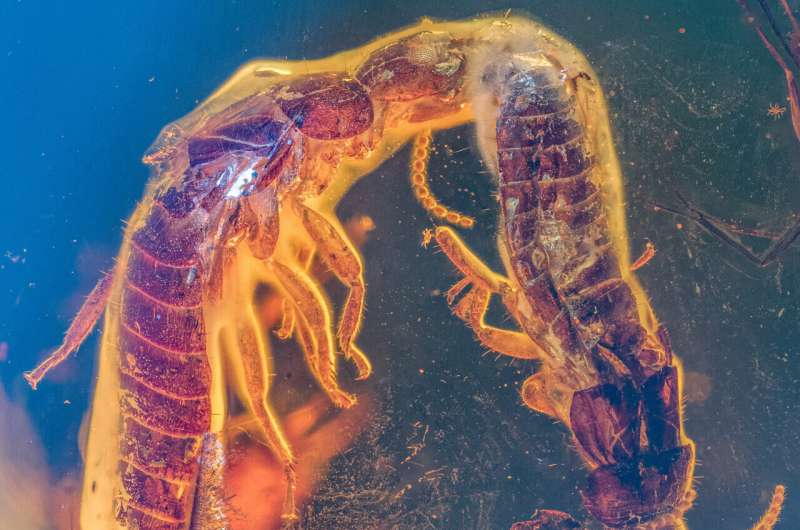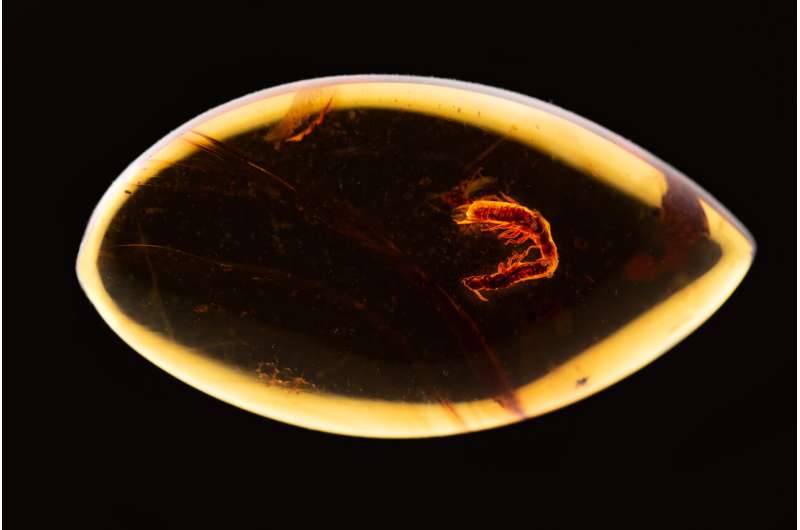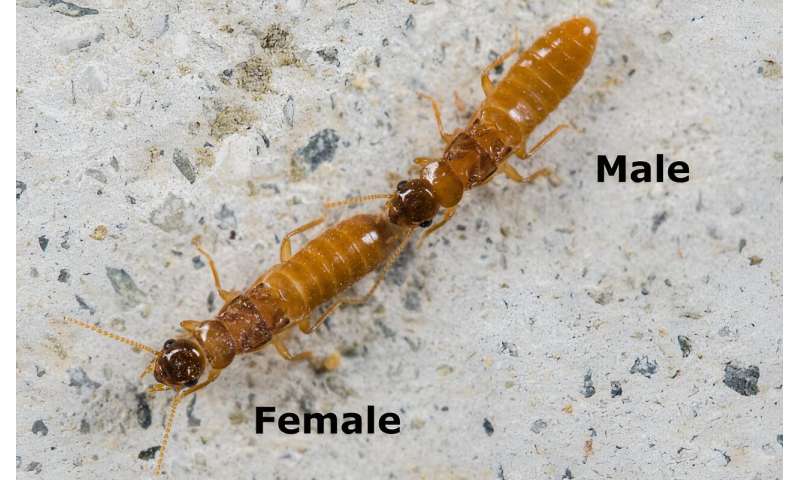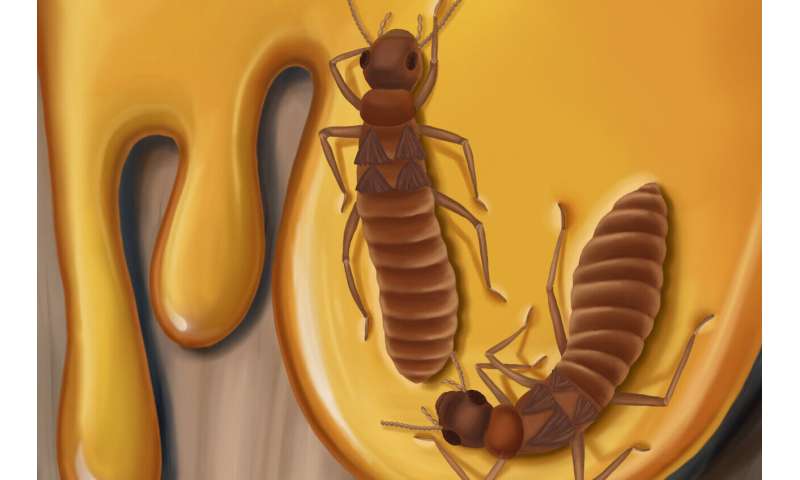This article has been reviewed according to Science X's editorial process and policies. Editors have highlighted the following attributes while ensuring the content's credibility:
fact-checked
peer-reviewed publication
trusted source
proofread
'Frozen behaviors' in amber fossils: How to reconstruct mating behavior of long-extinct termites

Approximately 38 million years ago two termites were in the middle of courtship behavior when they got entrapped by tree resin and preserved in fossilized amber. This, so far, oldest and only-described fossil of an Electrotermes affinis termite pair gave researchers from the Okinawa Institute of Science and Technology (OIST) the unique chance to analyze the mating behavior of the extinct insects.
Their findings were published in the Proceedings of the National Academy of Sciences.
The discovery of this rare fossil was a strike of luck. Dr. Ales Bucek, currently the head of the Laboratory of insect symbiosis at the Czech Academy of Sciences, immediately recognized the scientific value of this piece of amber when he saw it in an e-shop for fossil collectors. "Termite fossils are very common, but this piece was unique because it contains a pair. I have seen hundreds of fossils with termites enclosed, but never a pair," explains Dr. Bucek.
After purchasing the fossil, the team of the OIST Evolutionary Genomics Unit used an X-ray micro-CT to get a better look at the E. affinis pair embedded in the amber, "identifying the species was actually not easy, because there were bubbles in front of important parts of the termite's bodies," Dr. Simon Hellemans, a postdoctoral researcher at OIST, says.

The scan revealed not only to what species the insects belonged but also that the trapped individuals were a male and female laying side-by-side with the female's mouthparts touching the tip of the male's abdomen. An image the researchers were familiar with, as they observed it many times in current day termites engaged in a behavior called tandem running. During this mating behavior the insects display coordinated movements which ensure that the pair stays together while exploring a new nest-site.
What stood out in the fossil was the pair's irregular side-by-side positioning in the amber, instead of lying behind each other. "Our approach focused on how fossils are created and how behavior changes during the insect's death," Dr. Nobuaki Mizumoto, currently working as an assistant professor at Auburn University, explains. Because the preservation in tree resin is not instantaneous, the insect's normal mating behaviors are interrupted, and their positions shift while being encased in the sticky substance.
To test their hypothesis, that the forces during amber formation can explain the shift in position, Dr. Mizumoto and his colleagues simulated this process in the lab.
-

Current day termites form a straight line when running behind each other. During the tandem run, one partner keeps contact with the other using their antenna or mouthparts, to make sure they stay together while exploring a new nest site. Credit: Aleš Buček (OIST/The Czech Academy of Sciences) -

With the resin flowing slowly down the tree, the termites get trapped on the sticky surface and might eventually turn into an amber fossil. Credit: Anna Prokhorova (OIST/ The Czech Academy of Sciences)
Their experiments with mating termite pairs showed that even if the leading individual got trapped on a sticky surface, the follower neither escaped nor abandoned its partner but walked around them getting caught on the sticky surface themselves—in a position very similar to the pair immortalized in the amber.
"If a pair encounters a predator, they usually escape but I think on a sticky surface they do not realize the danger and get trapped," Dr. Mizumoto explains.
This novel approach of recreating the process of getting caught in the tree resin allowed the researchers to quantify behaviors of an extinct species with new precision. "For some things, fossils are simply the best evidence, a direct window to the past," Dr. Bucek and Dr. Mizumoto say.
More information: Nobuaki Mizumoto et al, Extinct and extant termites reveal the fidelity of behavior fossilization in amber, Proceedings of the National Academy of Sciences (2024). DOI: 10.1073/pnas.2308922121
Journal information: Proceedings of the National Academy of Sciences
Provided by Okinawa Institute of Science and Technology





















